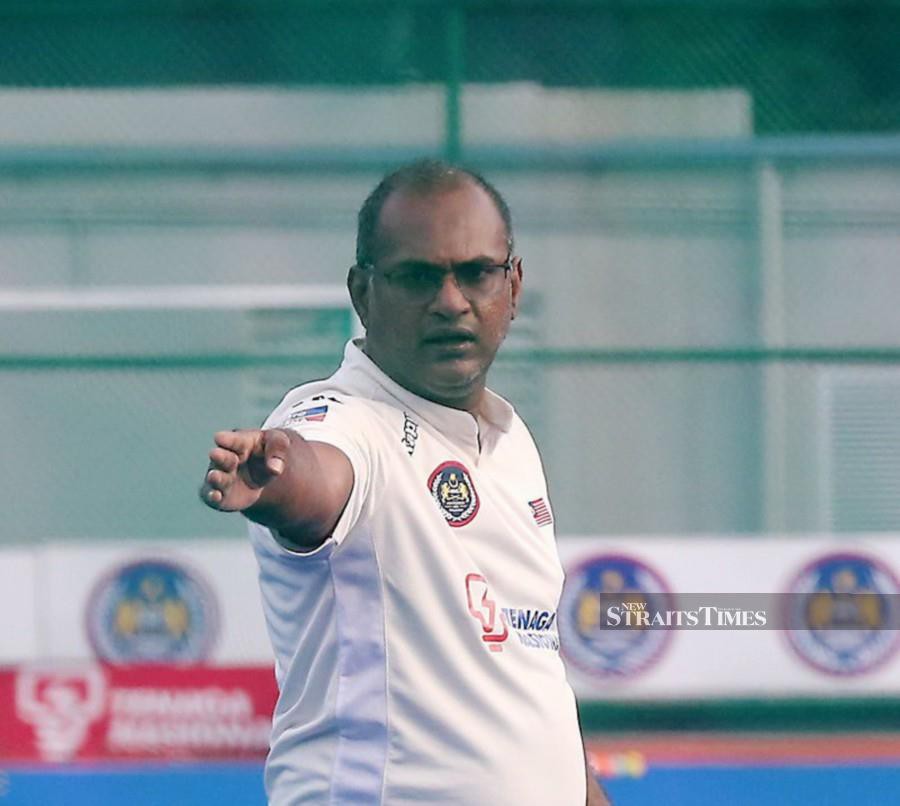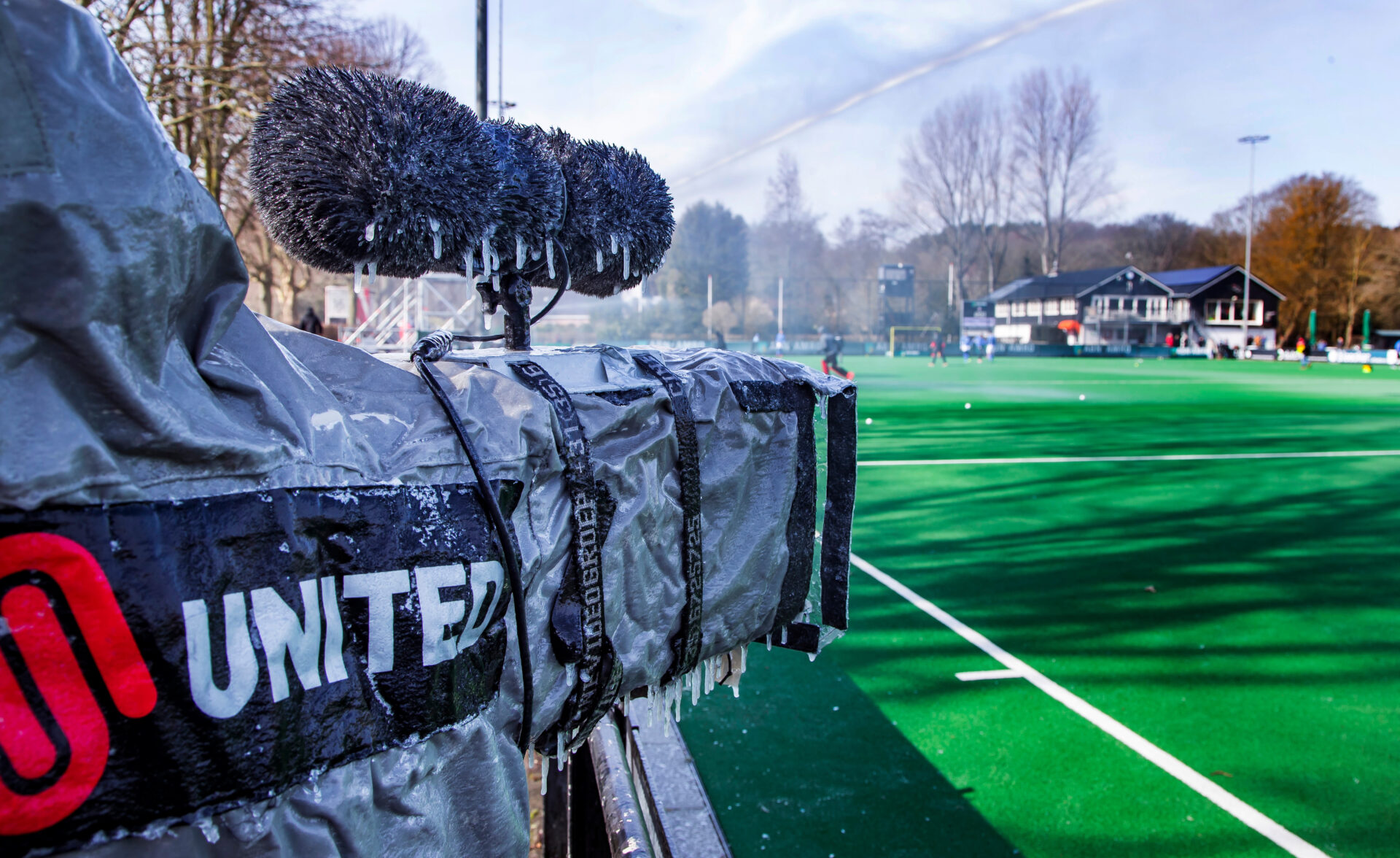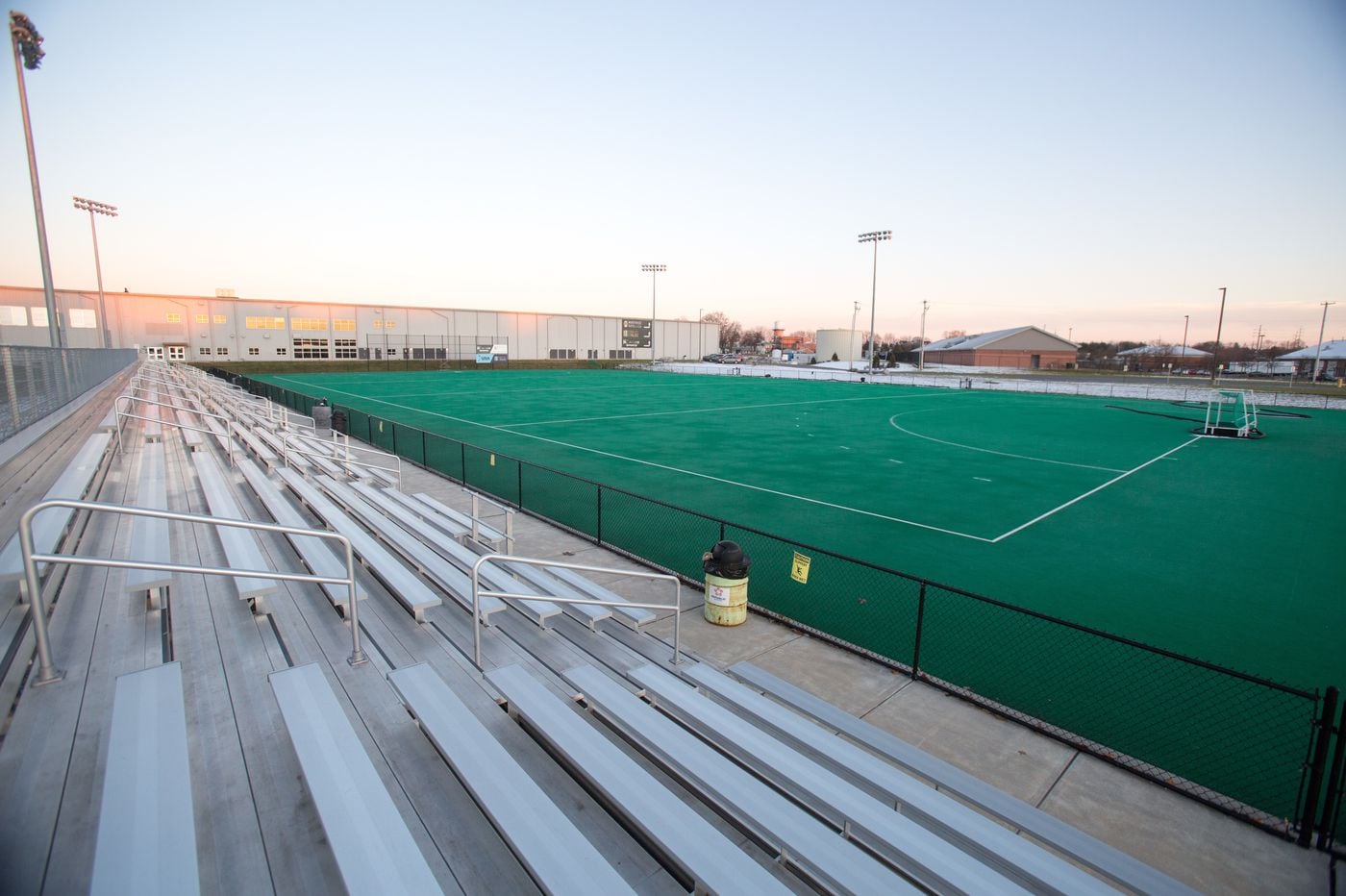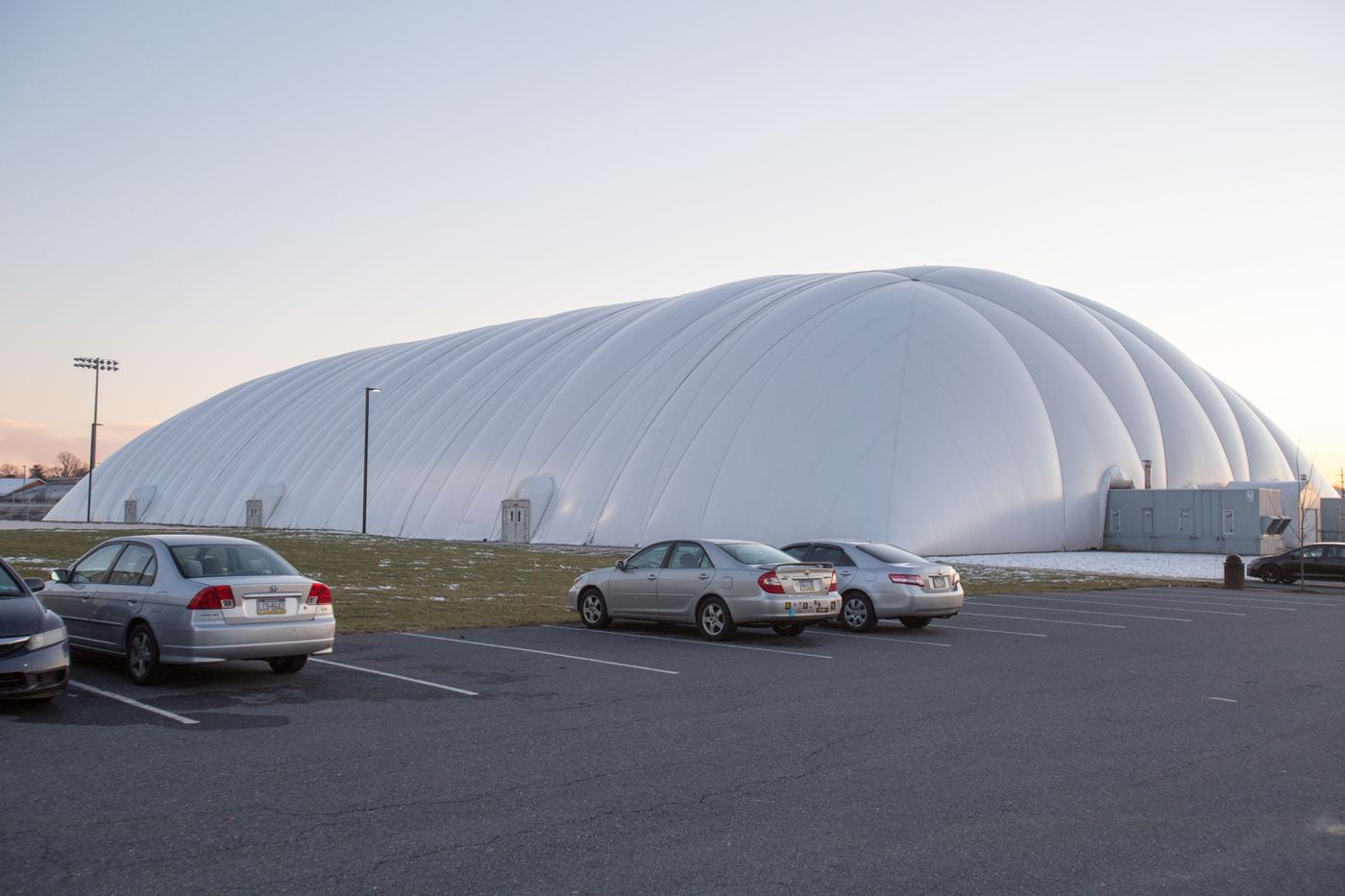News for 25 December 2019
All the news for Wednesday 25 December 2019
Indoor USMNT and USWNT Rosters Announced for 2020 Rohrmax Cup in Austria
COLORADO SPRINGS, Colo. – Following the naming of the squads after the trial in March and multiple training sessions since, the coaching staffs of the U.S. Men’s and Women’s National Indoor Teams have announced the traveling rosters that will represent the red, white and blue at the 2020 Rohrmax Cup in Vienna, Austria from January 2 to 5.
The Indoor USMNT will compete in Pool A against Austria, Czech Republic and the Luc Rochin Lille (The Netherlands) club team. Pool B consists of Belgium, Switzerland and club teams, the WKS Grunwald (Poland) and SV Arminen (Austria).
“We are excited to face the international competition,” said Alex Gheorghe, Indoor USMNT Head Coach. “The Rohrmax Cup will be a great preparation for us and I am looking forward to a successful tournament.”
“I am really pleased to be joining this group for the tournament in Vienna which will give the players an opportunity to compete at the highest level of indoor field hockey,” added Billy McPherson, Indoor USMNT Special Consultant. “We will be playing against Austria, the world champions, and the remaining teams will give the players tremendous experience.”
The Indoor USWNT program will have two teams representing. USA Blue in Pool A will be the Indoor USWNT and USA Gold in Pool B will be the Indoor USWNT Development Team. Pool A also contains Austria, Czech Republic and Belarus, while Pool B holds Belgium, Switzerland and SV Arminen.
In 2017, USA was represented by two women’s teams. USA Blue finished the tournament in fifth place with seven points and a 2-1-2 record. USA Red claimed the tournament title with 10 points and a 3-1-1 record. Both squads faced each other in the first match, with USA Blue claiming a 5-0 victory.
U.S. Men’s National Indoor Team Rohrmax Cup Roster:
Brett Andrews (Pittsburgh, Pa.), Glenn Carr (Shickshinny, Pa.), Christian DeAngelis (Doylestown, Pa.), Stephen Dennis (Fairfield, Conn.), Ajai Dhadwal (Agoura Hills, Calif.), Alex Grassi (Brookeville, Md.), Colin Hennessy (Marlborough, Mass.), Alberto Montilla (Allen, Texas), Nick Richardson (Sunapee, N.H.), Dean Schiller (Alexandria, Va.), Scott Sherban (Dublin, Ohio), Michael Young (Syracuse, N.Y.)
“I am pleased to have this extremely strong tournament to evaluate our players prior to selection for the women’s Indoor Pan American Cup,” said Jun Kentwell, Indoor USWNT Head Coach. “We have a good balance of experienced players and young players who excelled in the Croatia Cup earlier in the year. We shall be interested to see how they adjust to the big step up against some of the top indoor teams in the world. The college players and coaches on the squad have only been with us for a couple of sessions following their outdoor season but are starting to get back into the speed and tight spaces of the indoor game. This tournament will be a good challenge and measure for us as we start our preparation for March.”
U.S. Women’s National Indoor Team Rohrmax Cup Roster:
Kelsey Briddell (Wilton, N.Y.), Ali Campbell (Lancaster, Pa.), Samantha Carlino (Lewisburg, Pa.), Mayv Clune (Quakertown, Pa.), Sierra Espeland (Fredericksburg, Va.), Noelle Frost (Glenwood, Md.), Makayla Gallen (Glen Mills, Pa.), Annika Herbine (Macungie, Pa.), Laura Hurff (Newark, Del.), Kelly Marks (Huntington Station, N.Y.), Anarose McDonough (Kennett Square, Pa.), Hannah Prince (Gorham, Maine), Hope Rose (Dauphin, Pa.), Ashley Sessa (Schwenksville, Pa.), Macy Szukics (Malvern, Pa.), Kasey Tapman (Pasadena, Md.), Rayne Wright (Bethlehem, Pa.), Elizabeth Yeager (Rye, N.Y.), Corinne Zanolli (Newtown Square, Pa.)
The teams will depart for Austria on Tuesday, December 31 with one day of on-ground preparation on Wednesday, January 1. All matches for USA will begin on Thursday, January 2. USA Blue opens the tournament against Belarus, USA Gold will face SV Arminen and the men’s USA side will play Luc Rochin Lille. Games will not be live streamed for this event.
USA Field Hockey would like to thank Osaka for their sponsorship of the U.S. Men’s and Women’s National Indoor Team programs, as well as the United States Men’s Field Hockey Foundation. Another special thanks to Longstreth for providing gear to each indoor team, as well as the USA Field Hockey Foundation and Board of Trustees for their generous contributions.
For more information regarding the upcoming Rohrmax Cup, including the full schedule, visit the event page by clicking here.
USFHA media release
THT look to Dharmaraj for his golden touch
By K.M. Boopathy
K. Dharmaraj has been tasked with delivering silverware for THT. -NSTP/File pic
It is not possible to bring success everywhere a coach goes but K. Dharmaraj has made a fair fist of it.
Dharmaraj is regarded as one of the most successful coaches in the country.
The former international first made his name when he guided the Kuala Lumpur Hockey Club (KLHC) to eight Malaysia Hockey League (MHL ) titles between 2006-13 (KLHC were known as Ernst & Young when they won the first three crowns) and the Asian Champions Clubs Cup in 2008.
He also helped the national junior and women’s teams make inroads in world hockey before his contract was surprisingly not extended by the Malaysian Hockey Confederation (MHC) recently.
Dharmaraj has now returned to club hockey.
He will be coaching the Terengganu Hockey Team (THT) next season.
THT hope the experienced coach will turn their fortunes around as the Terengganu-based club hope to dominate next season’s MHL.
Dharmaraj’s side are well prepared and focused on doing better than defending MHL champions University Kuala Lumpur (UniKL) and Alagendra Cup winners Tenaga Nasional Berhad (TNB) next season.
“I am taking this as a new challenge. But my past achievements in the MHL will put me under tremendous pressure as THT want to win titles,” said Dharmaraj yesterday.
“What I achieved at KLHC was fantastic.
“This is my first MHL assignment in four years, so things will not be easy.
“THT had already selected their players when they hired me.”
Dharmaraj picked UniKL and TNB as his team’s main oppositions for titles next season.
“UniKL have many national players in their team while TNB have a solid side in the MHL.”
THT, as defending TNB Cup champions, start their campaign in the Charity Shield against UniKL on Jan 10.
“Obviously, we would like to start our league campaign with a bang. The Charity Shield match is part of the league, so we need to earn points from this game to kick off our season,” he added.
Among THT’s stars are Faizal Saari, Fitri Saari, Hafizudin Othman, Nabil Fiqri and Umar Bhutta of Pakistan.
New Straits Times
A hockey Christmas wish list: umpire support, parahockey, indoors and cards
By Todd Williams
Happy Christmas to all Hockey Paper readers PIC: World Sport Pics
No turkeys here! The Hockey Paper’s columnist Todd Williams creates his 10-point vision to make hockey a better place in 2020
Dear Santa,
I’ve just been up to my daughter’s bedroom and found her Christmas list. You can imagine how surprised I was to find just three requests. She wants world peace, rescue dogs to be given homes and a solution to global warming. Obviously you’ll see this on Twitter later when I post it with a comment like “Ah, so sweet”, when of course we both know I actually mean “Aren’t I an incredible parent???”
Seeing that the list is so short though, I was wondering if I could tack on a few “hockey” requests of my own? I’m not sure if you’ve heard of hockey but being up there in the North Pole you probably know the version that’s played on ice. The one we play here is pretty similar except a) we don’t wear skates and b) we lay an astroturf down first and then in December and January, run around on the ice that forms on top of that.
Of course for all I know, you and Mrs Claus might be avid Masters players up there in the Lapland Leagues. I’ll have a quick look on Facebook later to check. I know you like to keep a low profile, except in December but no Masters player I know can resist posting a team photo or 50, not to mention the mandatory post-game medal shot!
Anyway, here’s my list. By the way, without prioritising my needs over my daughter’s list, if you do fancy tackling climate change, it’s be really appreciated if you could still keep training nights on Tuesdays and Thursdays in January and February dry and above six degrees.
Your sled
Now I know this is cheeky but hear me out. This isn’t just for me but I’m also asking on behalf of people I know in the north of England, in places like Durham, Cardiff and Swansea.
We’ve obviously all noticed that you get around the whole planet in seemingly no time at all, although to be fair, traffic is a lot lighter when you’re at work as opposed to when we are on the M25 or M42 on a Saturday or Sunday afternoon. Anyway, if we can’t have the sled, then any help or advice on how to modify a car or minibus to do what your sled does would be gratefully received by many, many players, coaches and parents around the country.
Players who can trap
Santa, please don’t think I’m being a rebel or a heretic here and of course I believe that “game play” can solve every problem from urban traffic congestion to Rudolph’s unfortunate flatulence after too many carrots. On the other hand, it’s sort of noticeable that those primitive, backward thinking countries who almost cruelly train their players with all sorts of technical drills do seem in general to produce players who handle the ball a little bit better. And trapping is quite an important skill – you could say it’s almost as important as a rugby player being able to catch. Wait; no, it’s just as important.
Parahockey in clubs
Actually, Santa, can I put this at the top of my list? It’s just brilliant.
Support for umpires
I’ve read plenty about this topic recently and there are a range of areas and ways we can do this. One that immediately springs to mind is to compile some sort of database into the hobbies and interests of our National League umpires. Then, when they are appointed to a 400-mile round trip from say Exeter to Leeds, we can at least provide them with a list of things like rail museums, Roman settlements or antique car dealers that they can visit along the way.
Premier Division hockey in the North
It’s just an idea Santa but given there’s a Premier League in the South that the likes of Beeston, Brooklands and Bowdon get to play in, wouldn’t it be great if we could have one in the North as well? I’ve looked at the Premier League in football and there are loads of clubs, indeed most of them, from the North and Midlands that are nowhere near the M25 or a renovated religious temple.
11-a-side hockey
I’m sure in your youth, Santa, you would have played 5’s. It’s a great game which requires thought, skill, guile and cunning. It can be played anywhere but is best located after a league match, with teammates, in a comfortable pub or tavern and ideally in between 6 Nations’ games. Hockey 5’s, however, no matter how hard it is pushed by the FIH, is a dumb idea. A waste of time and resources, like The Hundred looming in cricket.
Indoor hockey
On the other hand Santa, indoor hockey is a great game. To the uninitiated, it’s hockey but inside. The biggest problem we face however seems to be when to play it and that’s where you come in. As you know, December is when we start sending all those lovely Christmas cards to our friends and family. Do you think, amongst the pictures of you, the reindeer, that cracking sled and all that snow, we could throw in a couple of hockey goals as a hint that it might be time to go inside until it gets a bit warmer? Actually, make that much warmer. Or should I say March warmer.
Hockey balls
Now I’m not being greedy here Santa. I don’t want new ones, I just want a few of the thousands that all those schools and clubs have lost over the last couple of years to come back. Any ideas on where they go would also be gratefully received. Is there a club somewhere shamelessly using their junior section in some sort of sweat house, scrubbing the permanent marker off and the reselling them on eBay? Or is there some dodgy scrap or foreign market that we don’t know about?
Green cards
Yes, it’s an odd request but let me explain. What I want is for umpires to give green cards for tackles in the last quarter of games that would have been a green card in the second quarter. Don’t get me wrong, I understand that the threshold for deliberate breakdowns should be higher in the last quarter but that is different. The idea of a blanket “you can’t give a green card with 5 to go” makes no sense.
In fact, it’s unfair that a team should benefit from a five-minute penalty in the last quarter when they only had to endure a two-minute sanction for exactly the same type of offence earlier in the match. A goal is worth the same whether it is scored in the first minute or the last, so why should a team get over twice the time to score with an extra player in the last quarter than a team had in the second, for the same offence?
More female coaches in men’s hockey
Finally Santa, it’d be great if you could help out with this one and actually I can help. I’ve discovered that the best way to get female coaches involved in the game, including the men’s game, is to ask them. I’ve done it this year and both my men’s squad and I are loving the expert knowledge and insight. Of course, it shouldn’t be too much of a surprise that an experienced international athlete should have a few clues about the game but, well, there you go. So, if there’s any way on your travels of airdropping some numbers around the hockey coaches you know, then that’d be super. As I say, it just takes a call.
Our resident coaching expert Todd Williams runs regular holiday camps. For 2020 dates, go to: www.williamshockeycoaching.com
Todd’s column is from our hockey safety special in our latest issue, only available via subscription in print or digital format. Keep hockey journalism flourishing in 2020 by signing up now! 
The Hockey Paper
U.S. field hockey’s failures cause rebellion that singles out Lancaster County training facility
by Frank Fitzpatrick
U.S. field hockey’s failures cause rebellion that singles out Lancaster County training facility. Kalim A. Bhatti
MANHEIM, Pa. — Perhaps it’s no coincidence that since the day after Halloween the U.S. women’s field hockey team, headquartered in Pennsylvania at a place called Spooky Nook, has been haunted by troubles.
On Nov. 1 and 2, in Bhubaneswar, India, Team USA split a two-game series with the host nation. But because India scored one more aggregate goal, 6-5, it and not the U.S. earned the last of 12 spots in the women’s field for the 2020 Tokyo Olympics.
“I’m devastated,” U.S. coach Janneke Schopman, a two-time Olympic medalist from the Netherlands, said at the time.
She is now also unemployed, having been fired — or “separated” as a USA Field Hockey news release termed the move — on Nov. 25.
Advertisement
The Olympic disappointment triggered a public rebellion in the typically low-profile sport. In a recently drafted, grievance-filled petition, both women and men players expressed discontent with USA Field Hockey’s progress in meeting the goals of its three-year-old strategic plan to grow the sport and improve the national teams’ performances.
For the women’s team, in particular, the negative developments marked a dramatic turnaround in perception.
Since 2013, the U.S. women have trained at the Spooky Nook Sports Complex. Located in Manheim, Lancaster County, it stands at the spiritual and competitive heart of American field hockey. Thirteen members of the 26-women national team are from Central and Southeastern Pennsylvania. Two of its stars come from the Philadelphia suburbs — midfielder Erin Matson from Chadds Ford, striker Margaux Paolino from Villanova
The decision to make Pennsylvania the women’s home immediately paid dividends and until 2018 the national team was trending upward. It finished fifth at the 2016 Rio Olympics, won a gold medal at the 2017 Field Hockey Federation (FHF) World League Semifinals (sic), and that year climbed to an all-time-high international ranking of No. 4.
But today, eliminated from the Olympics for the first time since 2004, without a coach and engulfed in turmoil, they’ve fallen to No. 13. The men, meanwhile, who have only two Olympic appearances in the last 63 years, both via home-team byes at Los Angeles in 1984 and Atlanta in 1996, are No. 24.
The covered indoor field hockey field in Manheim, Pa. Kalim A. Bhatti
The recent drop-off in performance along with ongoing concerns about finances, administrative leadership and facilities apparently prompted the players’ unhappiness.
“In order for both the Men’s and Women’s teams to succeed,” reads their Petition to Review USA Field Hockey’s Mission to Succeed Internationally, “there are standards that need to be met in high-performance areas. Both teams feel those standards are not being met.”
That online petition, which as of Wednesday had garnered 5,695 signatures, cites seven problem areas, ranging from talent to budget to facilities. National team players, it alleges, have been served rotten or undercooked food, wear subpar uniforms, don’t get adequate medical treatment or insurance, and lack sufficient financial support.
The immediate impact of this uprising has been silence. USA Field Hockey’s executive director, Simon Hoskins, and other administrators did not respond to repeated requests to be interviewed for this article, as did players on both teams.
Targeting Spooky Nook
Surprisingly, one of the petition’s chief targets is Spooky Nook, where the women’s team has its offices and where it practices and plays on indoor and outdoor fields. Only four years ago, then Field Hockey Federation president Leandro Negre had called it “the most amazing facility I’ve ever seen.”
But the petition characterized its outdoor field as “unusable” and “unsafe” and further claimed the privately owned complex did not contain adequate locker or meeting facilities. The men’s training site at Chula Vista, Cal., also drew criticism for a lack of meeting space.
Advertisement
The women’s national team already has relocated its 2020 home games to the University of North Carolina and its future in Pennsylvania remains in doubt.
“There have been ongoing discussions with the Nook about many issues,” said Ralf Heuser, a former USA Field Hockey Foundation board member and a longtime observer of the sport. “From what I understand, there was a fungus in the dome. Then the water system didn’t work properly. And there have always been discussions about when US Field hockey could use the fields since there are other sports and other organizations using them.”
A Spooky Nook spokesperson disputed the petition’s claims.
“[The field] is not, in any way, unsafe or unusable,” said Mackenzie Bender, the facility’s marketing manager. “It’s five years into a 10-year warranty. With it getting some heavy usage over the last five years, we did file a warranty claim, which was recently accepted. As soon as an install date can be agreed upon the outdoor field will be replaced.”
A top-five sport in terms of its international popularity, field hockey has never caught fire in the U.S., particularly among men.
The American women’s Olympic debut came in 1984, when they won their only medal, a bronze. The men have made just five Olympic appearances since 1932, when in a three-team field they captured their lone medal, a bronze.
Historically, there were separate governing bodies for U.S. men’s and women’s field hockey. But in 1993, the organizations merged. The only American sports federation with that kind of arrangement, USA Field Hockey in return was mandated by the 1998 Ted Stevens Olympic and Amateur Sports Act to increase participation among both genders.
“The belief at that time was that the sport would grow for both men and women,” said Heuser. “But they haven’t. It’s still a more than 95 percent female sport.”
Consequently, the bulk of the organization’s resources and money have been directed toward the women.
USA Field Hockey’s Futures program was established in 1990 to help transform top high school talent into international-caliber players. While nearly 5,000 girls under 19 participate each year, there’s no similar program for men.
High school girls play the sport in 21 states, with its popularity concentrated in the Mid-Atlantic and California. And collegiately field hockey has benefited from Title IX, with the NCAA now sponsoring 263 women’s teams, 60 in Division I.
Meanwhile, there are no sanctioned men’s field hockey programs at either the high school or college level in the U.S. Approximately half the men’s squad is comprised of players with dual citizenships, many of whom compete in European professional leagues.
The women’s team listed expenses of $2.6 million in 2018, $1 million of which came from the USOC, the rest from USA Field Hockey and sponsorships. A total of $300,000 went toward stipends for the national women’s team.
The men got no USOC support and spent just $400,000 that same year. As a result, Heuser said, it’s a virtual pay-to-play system for them. Junior men, for example, are responsible not just their own travel expenses but for compensating their coaches.
“They have to pay for coaches’ salaries, pay for their airfares and meals,” said Heuser. “What it all means is that quite a few talented players haven’t been able to afford participating.”
While participation has grown slightly or remained steady through recent years, there were, according to USA Field Hockey figures, small declines between 2017 and 2018 in three age groups — under-12, under-19 and adults.
The players’ petition has a modest goal of 7,500 signatures, but whether it helps effect any significant change — in either organizational structure or team performances — won’t be known until after this summer’s Olympics, when a new cycle of international competition begins.
“They’re three years into a strategic plan that’s obviously failed,” said Heuser. “The ranking has been sliding. They failed to make the Olympics. The women’s coach has been fired. And there really has been no one to hold them accountable. Projects are born and then disappear into thin air.
“Clearly something needs to change.”
The Philadelphia Inquirer